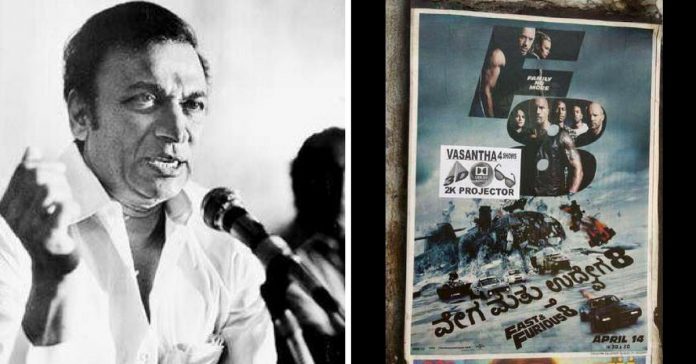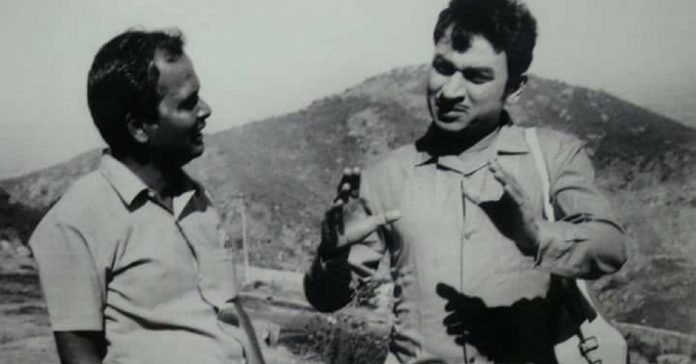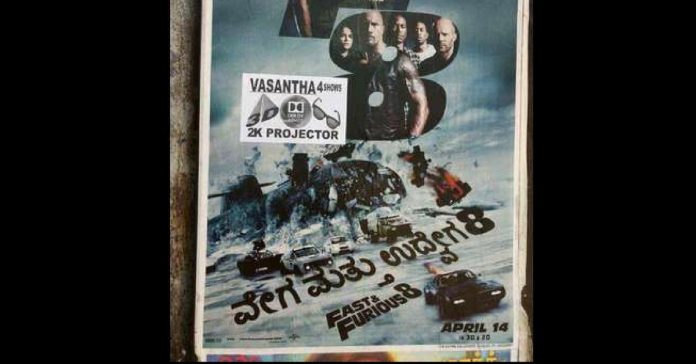
Dubbing of other language films to Kannada is/was banned since the 1960s. Now before going to the details of why did Dr. Rajkumar oppose dubbing, let us have a general view. Dubbing is an activity in which the voice of an artist from other language films are modified in the regional language to be shown in the same local theatres. This may not be the right definition, but an easy one which can make you see the picture.
Karnataka has its own tradition and culture, so how do you explain a super hit Punjabi film with hero and heroine dancing to Bhangra, changed to the Kannada language? Do you think it will reflect our culture? There was a popular film which was made to Kannada and Tamil, at the same time, and in the Kannada version, the dialogue was “Sattiruva Hena Biddithe.” When this was pointed in the film review, it was changed. But just note the fact, a dead body is referred to as “Hena” so what does the phrase “Satta Hena” mean? That the corpse is already dead?
No, the issue has not stopped with only movies. It has even spilled over to television serials in recent times. Pro-Kannada activists have stopped Hindi serials from being dubbed into the Kannada language. The main reason, one regional television industry allowed the dubbing of a popular family serial to be dubbed in the same language. The serial became a hit and it almost killed the regional television industry.
Why Did Dr. Rajkumar Oppose Dubbing?
The issue, you face today as a Kannadiga is just a rewinding of the events that happened in the 1960s. It was the period Karnataka State was formed. Even Kannada films in those times had to face the wrath of Telugu and Tamil movies dubbed in the regional language. Vijaya Vahini Studios dubbed Maya Bazaar and Patala Bhairavi to Kannada from Telugu and minted money. In 1957, the number of Kannada films produced was 11 and it declined to just 7 because of the other language dubbed movies in Kannada. In the 1960s, the influx of dubbed movies eroded the revenues of native Kannada producers.
When popular writers such as A Na Kru and Ma Ramamurthy saw that Kannada films are pushed to a corner, they started the anti-dubbing movement. Dr. Rajkumar and other movie stalwarts such as G V Iyer added strength to it. And since that time, there was a “Gentleman’s Agreement” that no regional film will be dubbed in the Kannada language.
Such was the popularity of Dr. Rajkumar, that till he was alive, the dubbing issue was “non-existent” in the industry.

For Producers, it is pure economic sense
In addition to the threat of language and culture, Dr. Rajkumar saw that this dubbing can affect the livelihood of many Kannada artists and technicians. Just imagine the consequences. Let us imagine, a Bhojpuri film is a blockbuster. A producer who feels that the story can succeed in Karnataka, dubs, and releases the film. There is no reason why he should employ the Kannada technicians, artists etc.
For the producers, it is pure economic sense. Spend little money. Change the voice of the artist. Make money. When there is no regional film industry, the dubbing establishes the hegemony of other language producers.
In 1960’s, the market and budget for the Kannada films were very small. It could not match up to the high budget of Tamil, Telugu and Bollywood films. And naturally, even the Kannada audience, because of the low rate of local Kannada films started to patronize the dubbed movies.

Conclusion
For a dubbing film, the producer need not spend money on the actors to perform. He just has to change the voice in the regional language. In other words, it is just a cheap way of tapping money in the regional market. A remake is different. The storyline is picked from the other language. And the regional artists and technicians are used in the making of the movie. At the present moment, you find many advertisements dubbed in Kannada. You barely look or pay attention to them as they come in-between your favorite movie or television serials. But just have a look at the words given by make-over artists. The words they use are few and spelled wrong. It is only the images, the shots that captivate you.
It is a fact, because of Dr. Rajkumar and other Kannada stalwarts, there was no talk of dubbing till 2000 right from the 1960s. In case there was no opposition, at present, we may have had to check only the remains. And the headquarters of the film industry will not be Gandhinagar in Bangalore but the location may have been somewhere else, in Chennai or Hyderabad.
Hope you found this article Interesting. Please let us know your views on Dubbing in the comments below.
Like and follow MetroSaga on Facebook | Instagram
You can also Subscribe to MetroSaga for newsletters.


































